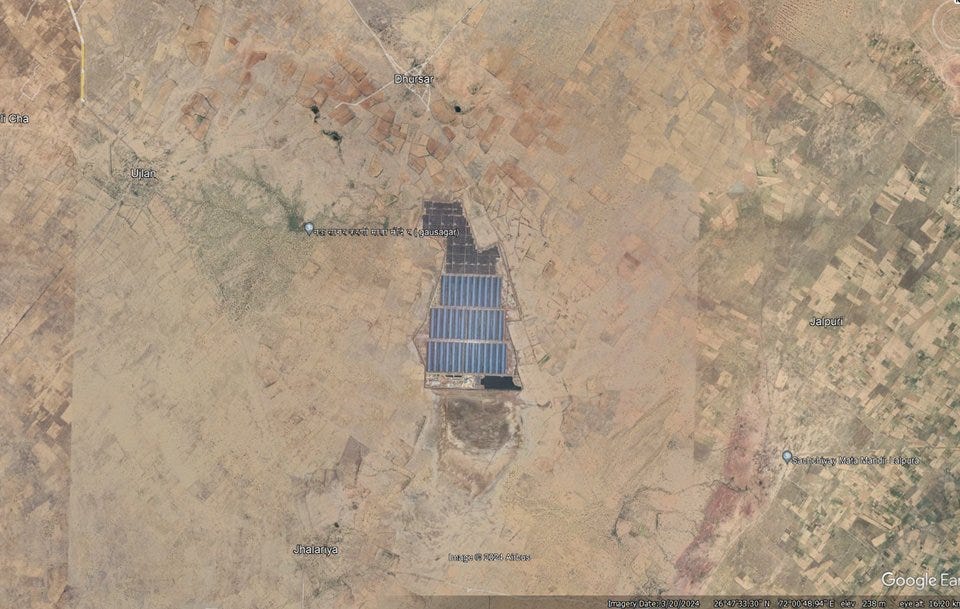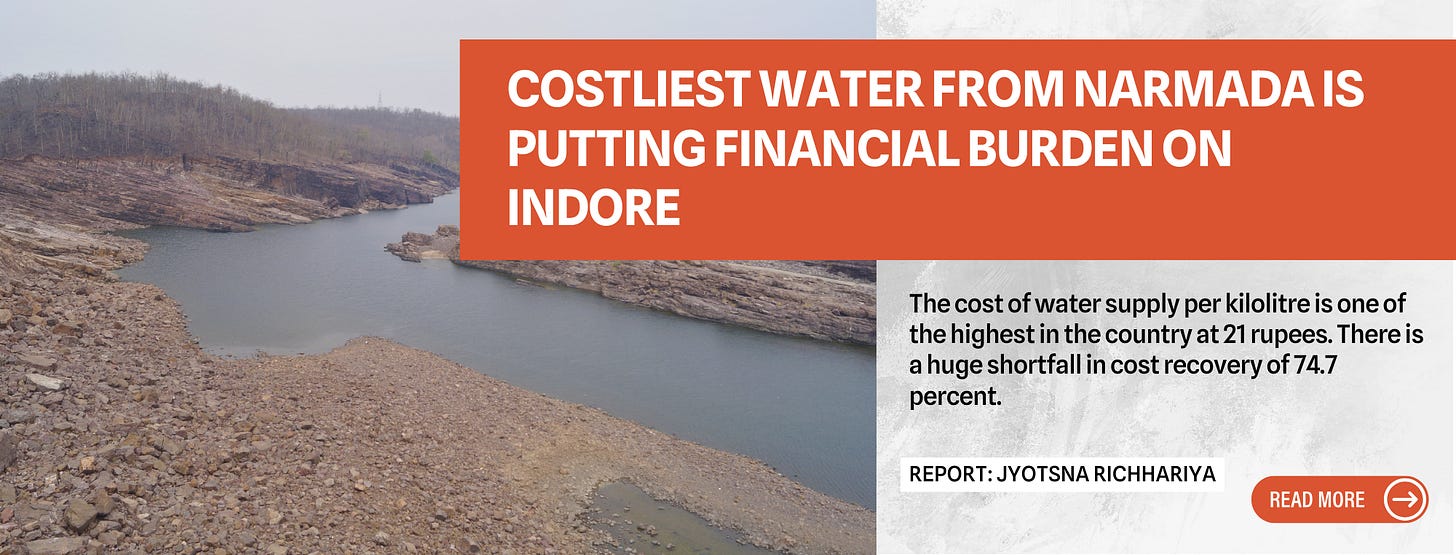Floods ravage Tripura, unusual rains soak Jaisalmer, Bangladesh struggles
Ground Report is providing valuable environmental news and insights. If you’ve found our content useful, we kindly request that you donate to environmental journalism.
Hello everyone! Wahid Bhat here, bringing you another edition of our newsletter. Today, we're looking at some unusual weather events happening in India. We'll talk about the terrible floods in Tripura, the surprising rains in Jaisalmer (usually a very dry place), and the flood situation in Bangladesh. Let's dive in!
Tripura: Facing its worst floods in nearly 70 years
Tripura, a state in northeast India, is dealing with its worst floods since 1956. The situation is really bad, with over 17 lakh people affected. Sadly, 20 people have died because of the floods and landslides since Monday.
The rain has been incredibly heavy. In just one day, a place called Bogafa in South Tripura got 493.6mm of rain! Another town, Sonamura, got 293.4mm. That's a lot of water coming down very quickly.
The government has set up 450 camps to help people. These camps are giving shelter to 65,400 people who had to leave their homes. The floods have damaged houses, farms, and many roads.
The situation worsened in the city after it received 233 mm of rain on Wednesday, which couldn’t be pumped out because the Haora River was overflowing.
“Agartala is like a bowl barricaded with Haora River on one side and Kathakhal on the other. Generally, Agartala Municipal Corporation (AMC) pumps out water into the river in any flash flood situation from 17 locations but this time, water from both Haora and Kathakhal moved back and deposited water in the city through leaked embankments,” said AMC mayor Dipak Majumder.
Usually, water from Tripura flows into Bangladesh. But this time, it's different. Bangladesh is already flooded, so the water is flowing back into Tripura in some rivers. This is making things even worse.
Six districts in Tripura have rivers flowing above the danger mark. Farmers in all eight districts have lost crops. The government is working hard to fix damaged roads and clear landslides, but there's still a lot to do.
Jaisalmer: Desert town sees unusual rains
Now, let's talk about something really surprising. Jaisalmer, a city in Rajasthan that's usually very dry, and known for its dunes has been getting a lot of rain lately.
Rajasthan normally doesn't get much rain, but this year it's gotten 39% more than usual. The western part of Rajasthan, which is usually the driest, has gotten 58% more rain than normal.
Jaisalmer, which is deep in the Thar Desert, has become the eighth wettest district in all of India! Usually, it's the seventh driest. From June 1 to August 11, Jaisalmer got 259.9 mm of rain. That's 134% more than it usually gets.
This much rain is causing problems. Parts of the famous Sonar Fort in Jaisalmer have even collapsed because of all the water.
This isn't just happening this year. Over the past ten years, Jaisalmer has been getting more and more rain. In 2015, it got 90% more rain than normal. In 2017, it was 43% more, and in 2020, it was 55% more.
The weather office has had to change its records because of all this extra rain. They used to say Jaisalmer normally gets about 158.4 mm of rain in a year. Now, they've changed that to 162.1 mm. But even with this change, Jaisalmer is still getting way more rain than expected.
Bangladesh: Millions affected by floods
Let's now look at what's happening in our neighbour country, Bangladesh. They're also facing serious flooding.
Nearly 3 million people in Bangladesh have been affected by floods. Many homes are underwater, and people are stuck on their rooftops. The flooding is really bad in areas like Feni, Moulvibazar, Habiganj, Comilla, and Chittagong.
The floods have cut off many roads, making it hard for help to reach people. One resident from Feni said he hadn't seen so much water in 20 years. His house is flooded up to waist level.
Bangladesh often faces flooding problems. A study in 2015 said that about 3.5 million people in Bangladesh are at risk of flooding every year. Scientists say that climate change is making these floods worse.
There was some talk on social media blaming India for the floods in Bangladesh. But India has said this isn't true.
"We have seen concerns being expressed in Bangladesh that the current situation of flood in districts on the eastern borders of Bangladesh has been caused by the opening of the Dumbur dam upstream of the Gumti River in Tripura. This is factually not correct," the Ministry of External Affairs (MEA) said.
They explained that the dam in Tripura that some people were blaming is very far from Bangladesh, and couldn't have caused these floods.
5 important environmental news, that you might have missed!
Positive News
Ground Report
Fellowships, grants alert
Vital Impacts is offering grants to fund documentary projects that spotlight solutions-based environmental narratives. Established and emerging environmental photographers can apply by Sept. 15.
https://buff.ly/3Xea0JJ
Climate Home News is accepting pitches for long-form stories that explore how energy transition can help support sustainable development and more. Reporters must have at least three years of experience.
https://buff.ly/4dBwFFU
Signing out
That's all for today's newsletter, hope you liked our issue. Let us tell you that the Ground Report covers environmental topics from a rural perspective. We believe that environmental journalism in India talks more about cities and the issues of rural areas are suppressed somewhere, while the people living in these areas are most affected by climate change because their livelihood is directly related to the environment.
We need your support to continue this effort. Share our work as much as possible and also support us financially.
Your little help will help in keeping alive the ground journalism on topics like environment.
Follow Ground Report on X, Instagram and Facebook for environmental and underreported stories from the margins. Give us feedback on our email id greport2018@gmail.com.
Don't forget to Subscribe to our weekly newsletter, Join our community on WhatsApp, Follow our Youtube Channel for video stories.
Check out Climate Glossary to learn about important environmental terms in simple language.















